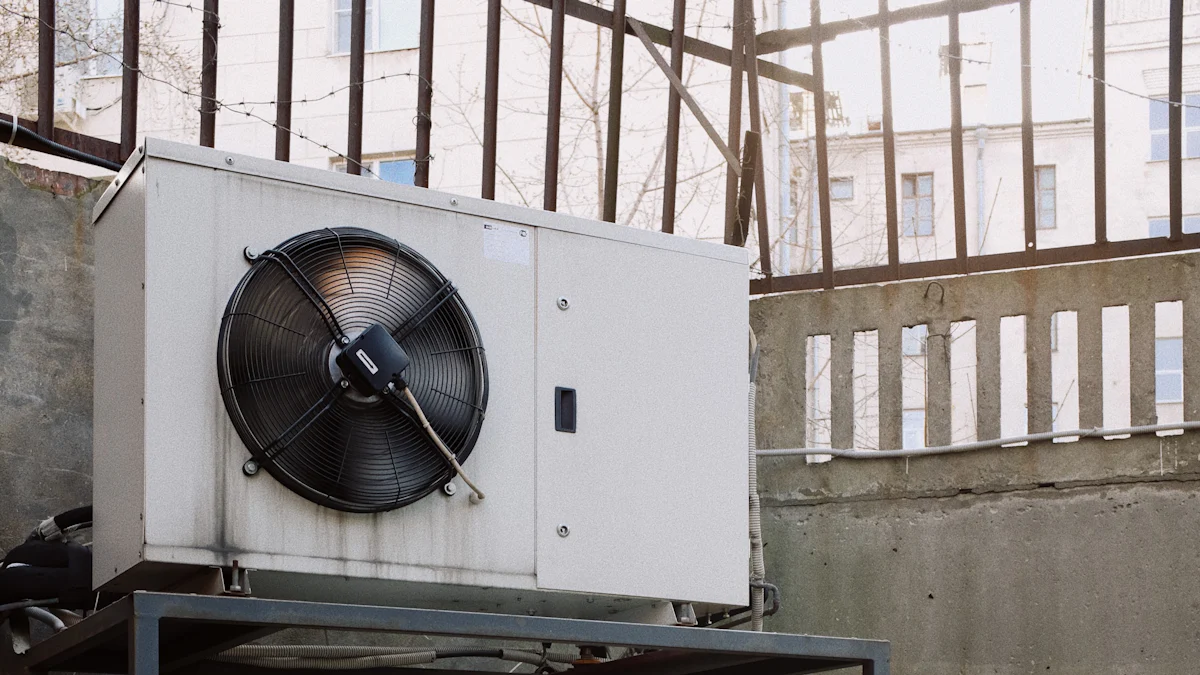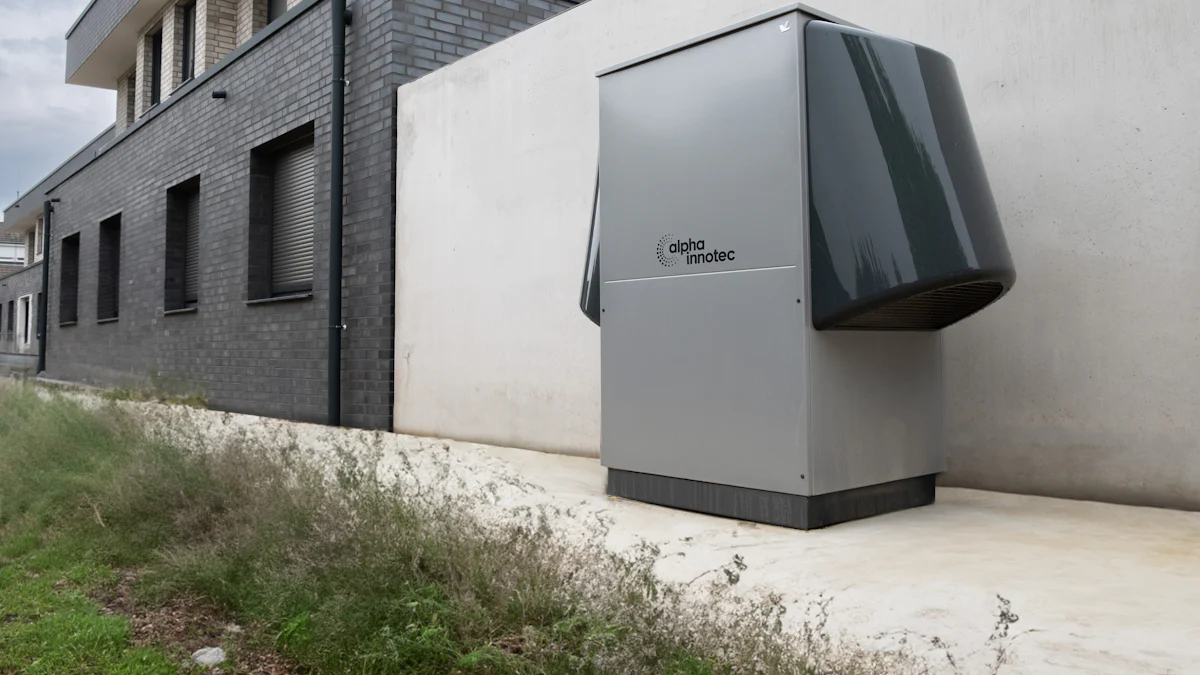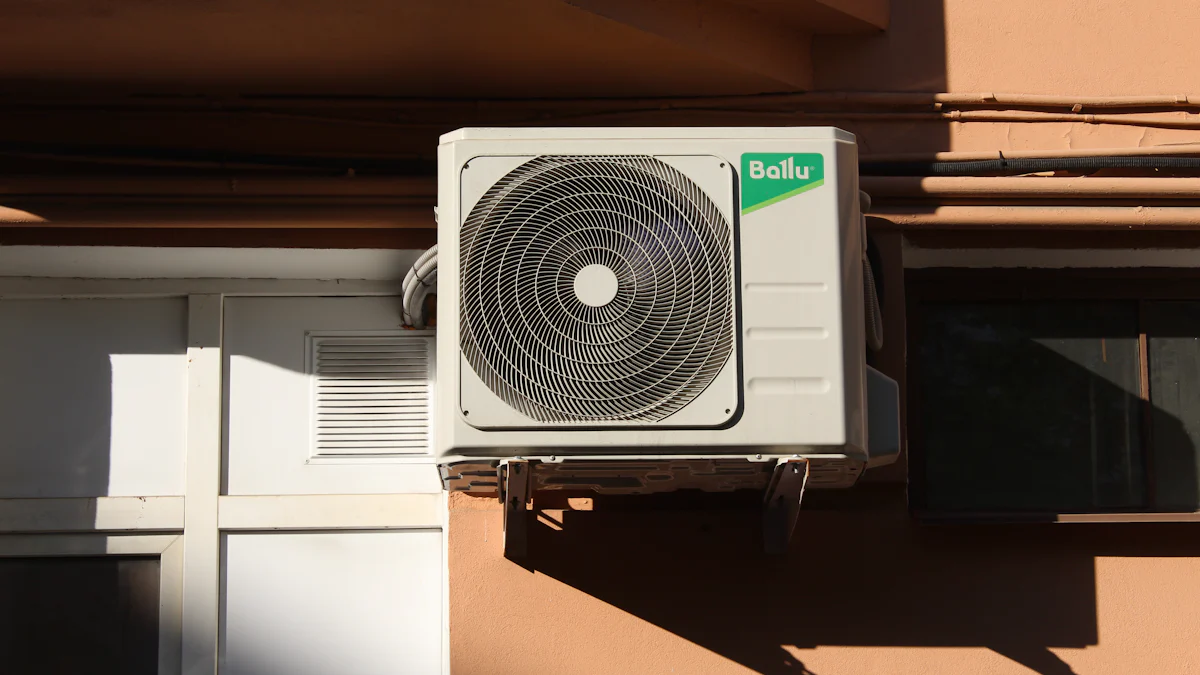How Wire Tube Condensers Enhance Cooling Efficiency

Cooling systems rely on efficient components to maintain performance. A wire tube condenser optimizes heat transfer, ensuring energy-efficient operation. These condensers play a vital role in applications like refrigerated trucks, supermarkets, and chemical plants. Their innovative design supports precise temperature control, making them indispensable for residential and industrial cooling systems worldwide.
Key Takeaways
- Wire tube condensers help cool faster by transferring heat better.
- This design saves energy, lowers costs, and uses less power.
- Strong materials like copper and steel make them last longer.
- They are a smart choice for homes and factories alike.
Key Features of Wire Tube Condensers

High Heat Transfer Efficiency
A wire tube condenser excels in heat transfer efficiency due to its innovative design. The arrangement of wires and tubes increases the surface area available for heat exchange, ensuring rapid dissipation of heat. Inline configurations further enhance performance by maximizing the number of wires used, which enlarges the heat transfer surface. For instance, a wire pitch of 7 mm in an inline setup demonstrates superior efficiency compared to other configurations. This design allows for better heat transfer rates, especially when operating conditions such as mass flow and fluid temperature are optimized.
Additionally, as the inlet fluid temperature rises, the outer surface temperature of the condenser increases. This leads to improved heat transfer through internal forced convection and conduction. These features make wire tube condensers a reliable choice for applications requiring consistent cooling performance.
| Design Feature | Contribution to Heat Transfer Efficiency |
|---|---|
| Arrangement of wires and tubes | Enhances the surface area for heat exchange. |
| Inline configuration | Maximizes the number of wires used, increasing the extended surface area for heat transfer. |
| Optimization of wire pitch | Plays a significant role in improving heat transfer rates. |
| Consideration of operating conditions | Improves heat transfer rates based on mass flow and fluid temperature. |
Energy-Saving Design
Wire tube condensers are designed to minimize energy consumption while maximizing cooling efficiency. Their ability to reduce the workload on compressors translates to lower power usage and operational costs. Compared to other cooling technologies, wire tube condensers offer a heat transfer coefficient that is 50% higher than plate condensers and 10%-15% higher than louver condensers. This enhanced efficiency not only saves energy but also aligns with global sustainability goals.
- Improved energy efficiency reduces environmental impact.
- Less refrigerant usage contributes to sustainability.
- Lower power consumption supports eco-friendly practices.
| Feature | Wire Tube Condenser | Other Cooling Technologies |
|---|---|---|
| Cooling Efficiency | High heat dissipation, rapid cooling | Varies, often less efficient |
| Energy Savings | Reduces compressor workload | Typically higher energy usage |
| Eco-Friendliness | Lower power consumption, recyclable | Varies, often less sustainable |
Durable and Customizable Construction
The durability of a wire tube condenser stems from the high-quality materials used in its construction. Copper, aluminum, and stainless steel are commonly employed for their excellent thermal conductivity and resistance to corrosion. For heavy-duty applications, steel offers superior mechanical strength, while titanium is ideal for harsh environments due to its resistance to high temperatures and corrosion.
Customization options further enhance the versatility of wire tube condensers. Manufacturers can tailor dimensions, materials, and configurations to meet specific cooling needs. For example, companies like Tempraco provide custom solutions, while Retekool offers personalized logos and packaging. This adaptability ensures that wire tube condensers can fit seamlessly into various applications, from household appliances to industrial systems.
| Material | Characteristics |
|---|---|
| Copper | Excellent thermal conductivity, corrosion resistance, durability, and reliability. |
| Aluminum | Lightweight, good thermal conductivity, cost-effective, suitable for energy-efficient applications. |
| Steel | Strong, durable, excellent resistance to mechanical stress, suitable for heavy-duty applications. |
| Stainless Steel | Superior corrosion resistance, ideal for hygiene-critical applications. |
| Titanium | Excellent resistance to corrosion and high temperatures, used in harsh environments. |
| Composite Materials | Lightweight and high strength, gaining traction for specialized applications. |
The Science Behind Wire Tube Condensers
Heat Rejection and Thermal Conductivity
I find that the efficiency of a wire tube condenser lies in its ability to reject heat effectively. This process involves transferring heat from the refrigerant inside the tubes to the surrounding air. The wires surrounding the tubes increase the surface area, allowing for faster heat dissipation. This enhanced heat transfer ensures the refrigerant cools and condenses efficiently, which improves overall cooling performance.
The thermal conductivity of the materials used plays a critical role in this process. Copper, for instance, offers excellent thermal conductivity, making it a preferred choice for high-efficiency applications. Aluminum, while slightly less conductive, is lightweight and suitable for weight-sensitive designs. Steel, though moderate in conductivity, provides durability and strength for industrial use.
| Material | Thermal Conductivity | Notes |
|---|---|---|
| Copper | Excellent | Preferred for manufacturing due to high efficiency. |
| Aluminum | Good | Lightweight, suitable for weight-critical applications. |
| Steel | Moderate | Strong and durable, but less emphasized for conductivity. |
Role of Materials in Cooling Efficiency
The choice of materials directly impacts the cooling efficiency of a wire tube condenser. Copper tube condensers excel in rapid heat transfer due to their high thermal conductivity. They are also durable and resistant to corrosion, which ensures long-term reliability. Steel tube condensers, on the other hand, are ideal for high-temperature applications. They offer strength and corrosion resistance but may require more maintenance.
- Copper Tube Condensers: Enable rapid heat transfer and reduce energy consumption.
- Steel Tube Condensers: Provide durability and affordability for industrial systems.
- Energy Efficiency: Copper’s superior conductivity minimizes energy usage, supporting sustainability.
Design Innovations for Enhanced Airflow
Recent innovations have significantly improved airflow in wire tube condensers. I’ve noticed that multi-layer wire tube designs maximize the surface area for heat exchange. Strategic placement of these layers ensures optimal airflow, which enhances heat dissipation. Advanced materials, such as new copper alloys, further improve thermal conductivity and corrosion resistance.
Other innovations include aluminum fins with optimized thickness and spacing. These fins enhance heat dissipation while maintaining a compact and lightweight design. Such advancements not only improve cooling efficiency but also reduce the overall size and weight of the condenser.
- Multi-layer wire tube designs increase heat exchange efficiency.
- Aluminum fins with varying thickness improve heat dissipation.
- Compact designs maintain performance while reducing weight.
Applications of Wire Tube Condensers

Household Appliances (Refrigerators and Freezers)
I’ve observed that wire tube condensers are indispensable in household appliances like refrigerators and freezers. These condensers excel at transferring heat, ensuring the interior remains cool while expelling heat to the surroundings. Their compact and reliable design makes them a preferred choice for modern appliances.
- Common Applications:
- Refrigerators
- Freezers
- Air conditioners
The benefits of using wire tube condensers in these appliances are numerous. They enhance cooling efficiency by expanding the surface area for heat dissipation. This results in faster cooling cycles and reduced energy consumption. Additionally, they contribute to quieter operation and align with sustainability goals by using recyclable materials.
| Benefit | Description |
|---|---|
| Improved Cooling Efficiency | Rapid heat dissipation ensures faster cooling cycles. |
| Energy Savings | Reduces compressor workload, lowering energy consumption. |
| Eco-Friendliness | Consumes less power and uses recyclable materials. |
| Long-Term Cost Efficiency | Lowers energy bills and maintenance costs over time. |
Industrial and Commercial Cooling Systems
Wire tube condensers play a critical role in industrial and commercial cooling systems. I’ve seen how their design maximizes heat transfer while minimizing energy consumption, making them highly efficient. Their robust construction ensures durability, even in harsh environments, reducing the need for frequent maintenance.
- Key Advantages:
- Enhanced energy efficiency reduces operational costs.
- Compact design allows installation in space-limited areas.
- Improved durability ensures a longer lifespan.
- Reduced environmental impact aligns with sustainable practices.
These condensers are vital in thermal management systems, where they transfer heat from the refrigerant to the ambient air. This process enhances the performance of cooling systems, making them suitable for applications like refrigerated trucks, supermarkets, and chemical plants.
Specialized Uses in Medical and Beverage Equipment
In specialized fields, wire tube condensers provide precise temperature control and reliable cooling. Medical refrigeration systems, for instance, depend on these condensers to store temperature-sensitive materials effectively. Beverage equipment also benefits from their energy efficiency and compact design.
- Medical Refrigeration Systems: Ensure precise temperature control for vaccines and medicines.
- Beverage Equipment: Maintain optimal cooling for drink dispensers and storage units.
- Cold-Chain Logistics: Support efficient cooling for temperature-sensitive products.
Their compact size and durability make them ideal for cold-chain operations and other specialized uses. I’ve noticed that their ability to enhance energy efficiency and reliability makes them a trusted choice in these industries.
Benefits of Wire Tube Condensers
Cost-Effectiveness and Energy Savings
I’ve seen how wire tube condensers deliver significant cost savings over their lifespan. Their energy-efficient design reduces operational costs by lowering power consumption. This efficiency translates into long-term savings, especially when compared to alternative cooling solutions. For instance, titanium-based wire tube condensers can save up to 2,000,000infuelcostsover20years,whilestainlesssteeloptionslike24BWGS44660offerevengreatersavingsof2,000,000 in fuel costs over 20 years, while stainless steel options like 24 BWG S44660 offer even greater savings of 2,670,000.
| Tube Material | Estimated Fuel Savings (20 years) |
|---|---|
| 22 BWG Titanium | $2,000,000 |
| N08367 | $665,000 |
| 22 BWG S44660 | $1,750,000 |
| 24 BWG S44660 | $2,670,000 |
| 18 BWG Copper-Nickel | $0 |
These savings highlight the economic advantages of choosing a wire tube condenser for cooling systems. By reducing energy consumption, these condensers not only lower utility bills but also support businesses in achieving their financial goals.
Reliability and Long Service Life
Durability is a hallmark of wire tube condensers. I’ve noticed that their robust construction ensures reliable performance even in demanding environments. High-quality materials like copper, aluminum, and stainless steel resist corrosion and wear, extending the lifespan of these condensers. This reliability minimizes maintenance needs and reduces downtime, which is critical for both residential and industrial applications.
For example, in medical refrigeration systems, the consistent performance of wire tube condensers ensures the safe storage of temperature-sensitive materials. In industrial settings, their long service life reduces the frequency of replacements, saving both time and resources. This dependability makes them a trusted choice for users seeking long-term value.
Eco-Friendly and Sustainable Cooling Solutions
Wire tube condensers align with modern sustainability goals. Their optimized heat transfer reduces energy consumption, which lowers operational costs and minimizes the carbon footprint. Built from durable materials, these condensers require fewer replacements, reducing waste over time. Many models also incorporate environmentally friendly materials, supporting greener refrigeration technologies.
- Optimized heat transfer reduces energy use.
- Lower operational costs contribute to a smaller carbon footprint.
- Durable construction minimizes waste through fewer replacements.
- Environmentally friendly materials align with sustainable practices.
I’ve observed that the rising demand for wire tube condensers reflects growing awareness of climate change and the need for sustainable solutions. Their energy efficiency meets key sustainability metrics, and government initiatives promoting eco-friendly appliances further boost their adoption. These factors make wire tube condensers an excellent choice for environmentally conscious users.
Wire tube condensers revolutionize cooling systems with their high heat dissipation and compact design. Their efficient heat transfer capabilities reduce energy consumption, making them indispensable in refrigeration, HVAC, and industrial applications. These condensers also support sustainable practices by lowering carbon emissions. From preserving perishable goods to enhancing solar thermal systems, their versatility ensures reliable performance across industries.
FAQ
What makes wire tube condensers more efficient than other types?
Wire tube condensers excel due to their larger heat transfer surface area and superior thermal conductivity. These features ensure faster cooling and reduced energy consumption.
Can wire tube condensers be customized for specific applications?
Yes, manufacturers offer customization options for dimensions, materials, and configurations. This flexibility ensures compatibility with diverse cooling systems, from household appliances to industrial equipment.
Are wire tube condensers environmentally friendly?
Absolutely! Their energy-efficient design reduces power consumption and carbon emissions. Durable materials also minimize waste, aligning with sustainability goals.


















